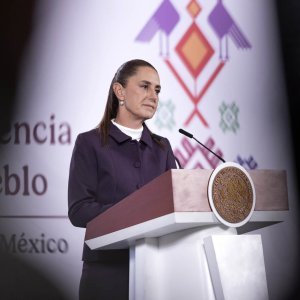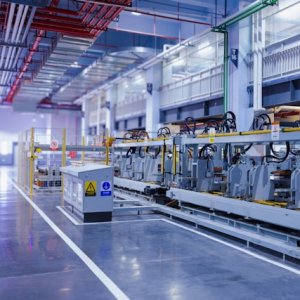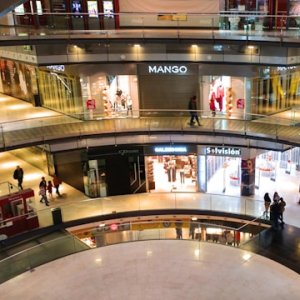
How Are Housing Developers Adapting to Younger Generations?
According to 2010 census figures, around 46 million people in Mexico are now aged between 15 and 34 years old, a demographic that is known as millennials. Making up 36 percent of the population, it is no surprise that housing developers are beginning to shift strategies to take this up and coming client into consideration. Housing needs of Millennials is significantly different to that of their parents’ generation, as they shun mortgages for housing.. The desire of Millennials for convenience and entertainment is driving new trends within the residential sector and developers are taking notice. Mexico Infrastructure & Sustainaibility Review asked the industry how they are staying ahead of these changing trends.
Eduardo Orozco
We are interested in at least 12 major cities in Mexico as they have a high concentration of services, which tends to attract the younger demographic and Millennials. In much the same pattern we have seen in the US in the last five years, we are seeing a new preference in Mexico for renting rather than owning. There is a much greater drive toward lifestyle and the 24-hour city wherein people want to be closer to work and create more convenience. The population is more mobile and less willing to commit, there are more single person households, with people delaying marriage and parenting. As a result, for the same population, now there is a requirement for 40-60 percent more houses because people are living alone or with roommates rather than in large family units.

Marcelo Gómez
By 2025, Millennials will represent approximately 75 percent of the country’s workforce. Currently, there are more than 30 million Millennials living in Mexico between the ages of 21 to 34 who will be looking to either rent or buy housing in the coming years. These millennials are 100 percent dependent on technology and prefer to have specialized products. We have been pushing for more interaction with our clients through social media in the last year and we discovered that 61 percent of the social media interactions regarding our Lomas de Angelopolis development is from millennials. They value a good location, excellent connectivity, sustainability, green areas and the integration of technology. For example, all the green areas and parks in our developments have free Wi-Fi. Cholula-Puebla has become a millennial hub thanks to the many universities and academic organizations that have formed throughout the years.

Fernando Gutiérrez
Despite the geopolitical context, the market is attracting investment thanks to the demand for new living opportunities that are being transformed by the expanding Millennial market. We expect almost 40 million Millennials to enter the market in the coming years with needs that differ from those of previous generations. We foresee growth in the residential, office and commercial markets along with the mixed-use sector. Gaya strives to understand what mixed use means for Millennials rather than impose on them the view of older generations. Overall, Mexico City has significant challenges but great advantages. The way people use infrastructure is constantly changing and we must generate aggressive change to ensure Mexico City is a futuristic and forward-looking city. We look forward to the entrance of multiple investment vehicles in the near future.

Andrés Gómez
GVA is committed to understanding and meeting the needs of these newer generations. Millennials don’t want to be locked in an office and they seek through the use of technology new ways to work and interact. They are now freer to travel around the world and work from their computers. This means they are looking for accommodations that suit their lifestyles. We are transitioning toward this reality by taking a plunge into the concept of shared living spaces, an element of the sharing-economy trend driven by companies like Uber and AirBnB. It allows Millennials to rent spaces for days or weeks at a time without a contract or financial attachments. These accommodations also offer common areas where they can socialize. Young people can save money by sharing and collaborating. They benefit from a sense of community that is not often offered by more traditional apartments. New generations yearn for zero-commitment lifestyles.

Victor Legorreta
I am very enthusiastic about carrying out projects designed for the younger generation because it is developing a new way of life. This can be seen with car ownership and the new emphasis on Uber and shared economy. I cannot predict how this will trickle into housing but I feel that people now do not place so much importance on owning property. I think we are just seeing the beginnings of the shared economy because young people are focusing more and more on quality of life rather than on owning possessions. This will definitely affect our architecture. I think that developments of the future must be personalized because there are so many unique family structures now that one family has completely different needs from another.

Carlos Rosseau
Monterrey is a large city with various submarkets. Right now, we are working in San Pedro Garza García, which is the neighborhood with the highest income per capita in Monterrey, so this is where most high-end projects are currently focused. That market is a little saturated and Monterrey has other submarkets that are gaining traction. The more rural areas of Monterrey are beginning to see further commercial developments, mixed-use projects and shopping malls being built. I think in the future, we will start to see a big movement toward Monterrey’s downtown. The traffic in San Pedro Garza García is becoming unmanageable and the Millennial generation wants to live close to their places of work and entertainment.

Alejandro Ballesteros
Residential, commercial and office developments are long term investments. One must take decisions one day at a time, accelerating or slowing down the rhythm of investment depending on the current demand. We continue to invest and we believe in the success in both the country and the real estate sector. We are not in the rental housing business, but we do recognize that it is a growing market. We are considering in selling part of our residential projects to rental housing experts. Millennials are not so different from past generations; it just takes common sense to profile them. People continue to look for nice neighborhoods that are close to their jobs and to their recreational activities. Of course, they demand that technology is well integrated in to their day-to-day activities, which is why we are incorporating them into our developments. Companies must always be aware of the incoming trends and be prepared to improve the quality of life of the consumers.
















